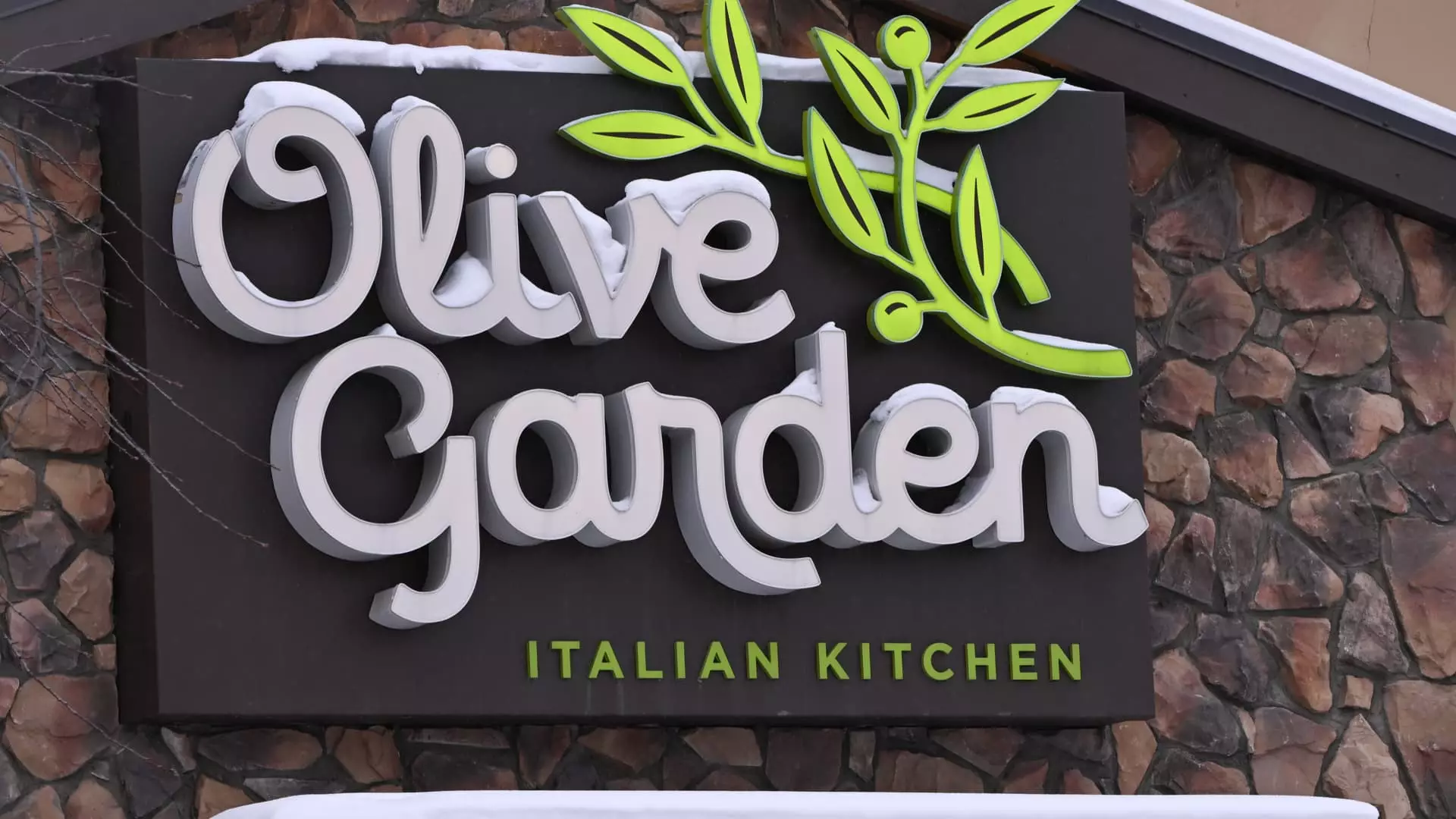Darden Restaurants, a titan in the casual dining sector, recently disclosed its financial health for the fiscal third quarter, and the results are less than stellar. With a reported revenue of $3.16 billion—falling short of the $3.21 billion Wall Street anticipated—it’s clear that complacency may be lurking in the organization’s strategy. Although earnings per share slightly outpaced expectations at $2.80 versus the predicted $2.79, the underlying narrative is troubling. A 6.2% rise in net sales, primarily driven by the inclusion of Chuy’s, can’t overshadow the stark underperformance of its flagship brands.
Olive Garden and LongHorn: A Fading Glow
Olive Garden and LongHorn Steakhouse, traditionally Darden’s crown jewels, revealed alarming same-store sales growth that failed to impress. Olive Garden’s increase of just 0.6% compared to expectations of 1.5% signals a disconnect with customers’ appetites, while LongHorn’s modest 2.6% growth versus a forecast of 5% raises doubts about its future viability. This dismal performance not only damages Darden’s reputation but also paints a portrait of a brand that is becoming increasingly out of touch with its clientele.
Fine-Dining Decline: A Clear Signal
Even more concerning is the downturn in Darden’s fine-dining segment, which includes the likes of The Capital Grille and Ruth’s Chris Steak House, experiencing a 0.8% decline in same-store sales. In an era when consumers are increasingly seeking premium dining experiences, this downward trend represents not just organizational challenges but also a fading luxury brand appeal. The grim reality begs the question: Is Darden losing its ability to cater to evolving consumer preferences or potentially pricing itself out of the market?
Chuy’s Challenge: An Added Concern
Darden’s acquisition of Chuy’s, while initially appearing as a strategic move to expand its portfolio, comes with its own challenges. Though inclusion in the earnings report hints at growth, the fact that Chuy’s won’t positively influence Darden’s same-store sales until 2026 indicates a future clouded with uncertainty. This delay in tangible benefits almost renders the acquisition a detriment rather than an asset, particularly in light of the current operational weaknesses.
Looking Ahead: Forecasts and Worries
As Darden attempts to steer through these formidable waters, the hope for revenue projections of $12.1 billion for the year seems precariously balanced. A narrowed outlook for adjusted earnings from continuing operations indicates a lack of confidence in overcoming immediate setbacks. It can no longer be business as usual for Darden; the company must confront a daunting reality about its culinary relevance and appeal in a dynamically changing market.
It’s imperative for Darden to reassess its engagement with customers and to recalibrate its brand strategy to not only survive but also thrive in a competitive landscape. If the current trajectory continues, we may be witnessing more than a mere financial misstep; perhaps it is a bellwether for a larger, ongoing decline.

